October 14 & 15, 2022
Atlanta Symphony Hall, Woodruff Arts Center
Atlanta, Georgia – USA
Nathalie Stutzmann, music director/conductor; Netia Jones, video artist.
BRAHMS: Symphony No. 3
FRANCK: Le chasseur maudit
SCHOENBERG: Verklärte Nacht
Mark Gresham | 17 OCT 2022
One week after making her debut as music director of the Atlanta Symphony Orchestra, Nathalie Stutzmann returned to the podium at Symphony Hll to lead the orchestra in a concert of music by Brahms, Franck, and Schoenberg.
The concert opened with Symphony No. 3 of Johannes Brahms. That in itself is an unusual move. It’s typically at the other end of a program as a closer. But in this case, it was just as well, given the performance under Stutzmann’s baton suffered a somewhat dull and muddy interpretation, with phrasing, balance, and clarity issues. It makes one wonder why, especially given the previous week’s problematic Beethoven Ninth Symphony, but also in contrast with the Stutzmann-led performance of Tchaikovsky’s Fifth Symphony last October. We’ll have to observe more closely how she handles large symphonic forms in the future.
Tone poems seem to be another matter, evidenced by the two works that followed on Friday’s program. The first of those was César Franck’s Le Chasseur maudit (“The cursed huntsman”). 2022 marks the bicentennial of the birth of that French composer, so it’s natural to program some of Franck’s music only two months out from his birthday.
Inspired by the ballad Der wilde Jäger (“The Wild Hunter”) by the German poet Gottfried August Bürger, Le Chasseur maudit premiered in March 1883, on the same concert as the premiere of a work by Franck’s student, Ernest Chausson (prompting a pun: Le Chausson maudit.)
In a tone poem, the music is related to outside sources of inspiration: literary, pictorial, dramatic, or conceptual, rather than focusing on formal considerations (e.g., the symphonies of Haydn, Mozart, Beethoven, and Brahms). In this case, a nobleman hunter defies the sacredness of Sunday morning by going on a hunt and is cursed to be relentlessly pursued by demons for eternity.
One could say that a tone poem is an instrumental music that aspires to wordless opera. Stutzmann seems more in her element here.
Franck’s orchestration evokes the fantastical Gothic character of the story, at times recalling parts of Berlioz’s Symphonie fantastique. Both pieces incorporate four bassoons, as well as pairs of both trumpets and cornets, in the orchestra. However, one difference is that Berlioz calls for two bass ophicleides (a keyed brass instrument) which had become obsolete by the late 19th century, but Franck calls for a single tuba, but not the kind found in American orchestras today.
For this performance, Stutzmann insisted on using a French Tuba in C, a type of Saxhorn with six valves commonly used in French orchestras until the 1960s. To this end, ASO principal tuba Michael Moore acquired a French tuba (a modern copy) for this and other French works conducted by Stutzmann. Moore used it in Le Chasseur maudit, although the average layperson listener would likely not have noticed the difference — something to which fans of brass music would be more closely attuned and attentive.
The opening features the orchestra’s horn section by themselves in noble calls to the hunt (measures 1-12 and 21-32), which sets the stage for more eerie and harrowing music to come. But Le Chasseur maudit is not the kind of musical edifice Brahms’ Third Symphony is, but that’s typical of many similar 19th-century tone poems and overtures that can often come off as barnburners. We can take it for what it is and offers without further expectation.
Another poem-inspired work came after intermission, Arnold Schoenberg’s Verklärte Nacht, Op. 4, inspired by Richard Dehmel’s mystical poem of the same name. It tells of a walk on a cold, moonlit night in a barren wood, in which a woman confesses to her lover that she is pregnant with the child of another man she never loved. After a period of meditation, he tells her that their love will make the child as if his own. They embrace, transforming the night with their devotion.
Originally for string sextet, the composer transcribed it for string orchestra twice, the second time in 1943, the version performed by the ASO on Friday.
This performance came with video art by Netia Jones and her Lightmap studio. Jones used the Moon, bare trees, and shadowy images of the lovers throughout the video projection, including occasional real-time video-streamed images of the ASO, gently (if only faintly) mixed into the starker imagery on a large screen above the orchestra.
Stutzmann was at her best of the evening in this work, guiding well the rising and falling melodic contour and textures from a sense of fear and uneasiness to a love-affirming resolution. ■
EXTERNAL LINKS:
- Atlanta Symphony Orchestra: aso.org
- Nathalie Stutzmann: nathaliestutzmann.com
- Netia Jones: netiajones.com

Mark Gresham is publisher and principal writer of EarRelevant. he began writing as a music journalist over 30 years ago, but has been a composer of music much longer than that. He was the winner of an ASCAP/Deems Taylor Award for music journalism in 2003.


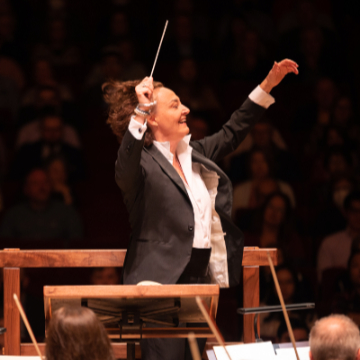
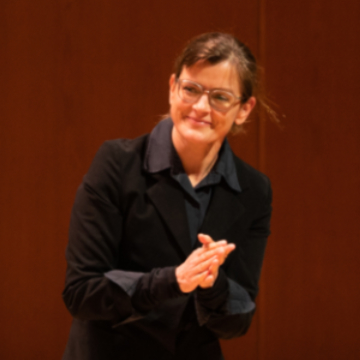

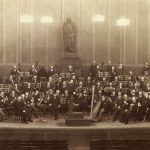
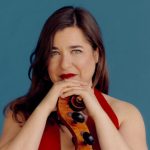

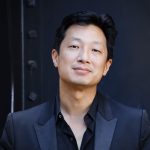
.png)